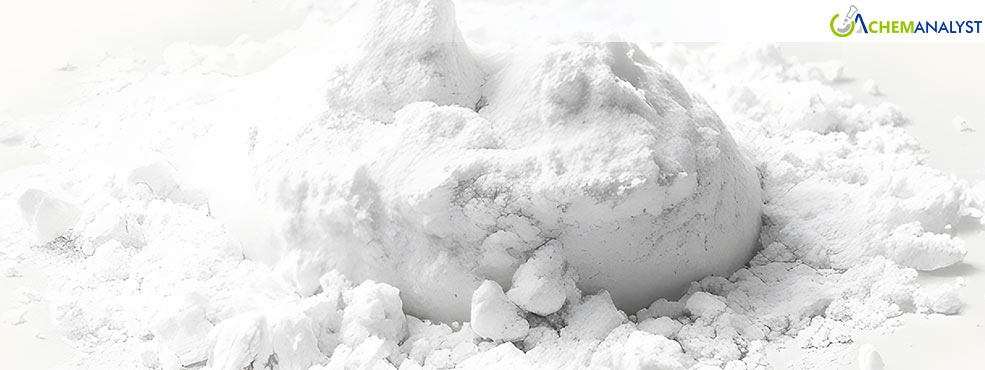Welcome To ChemAnalyst

In the week ended 23rd May 2025, Calcium Carbonate prices were broadly unchanged in both Europe and Malaysia. Calcium Carbonate market forces were driven by a combination of logistic disruptions, construction activity trends, and modest industrial demand. While the European market showed stability after past price adjustment, the Malaysian market showed consistent momentum based on ongoing infrastructure activities and government expenditure.
In Europe, calcium carbonate prices remained steady on the back of well-balanced supply and demand situations even in the face of constant logistic problems. Major ports like Hamburg, Bremerhaven, Antwerp, and Rotterdam were congested due to worker activities, high yard usage, and operational upsets like adverse weather and shortage of staff. These delays prolonged delivery schedules significantly, introducing uncertainty into delivery schedules. Manufacturers maintained steady production, though, and calcium carbonate inventories were sufficient not to result in considerable supply shortages.
On the demand side, activity in the construction industry continued to be subdued but showed signs of modest recovery. The Eurozone Construction activity rose by a thick in April, signaling a deceleration in the pace of contraction in the industry. New orders continued to decline, but the rate of decline eased, implying stabilization. Input costs did increase, though not sufficiently to push prices upwards. Final-use market demand such as that for plastics, coatings, and paper was firm, albeit cautious given overall economic uncertainties and conservative procurement practices.
Germany saw a softening of its building slowdown, nonetheless, and that meant steady consumption of calcium carbonate, especially the precipitated form that is applied to high-performance end uses. While exports remained dented by weak external demand and redirected shipments, the vigor of the home market insulated the product from any precipitous price changes.
Malaysia further showed stable prices for calcium carbonate, underpinned by strong building and favorable government policy. The construction sector remained the major driver of industrial material demand. Whilst quarter-to-quarter growth slowed down compared to previous quarters, civil engineering, housing, and trade industries indicated continuously high levels of production. Flagship infrastructure projects such as MRT3, Pan Borneo Highway, and flood protection works underpinned the stable consumption of calcium carbonate as an additive and filler to building materials.
Government policies like Construction 4.0 Strategic Plan are also driving an increased uptake of sustainable construction materials, digital technologies, and prefabricated units, all of which rely on high-performance calcium carbonate. Port Klang experienced moderate congestion, with ship waiting times somewhat longer, but supply chains uninterrupted. Private investment in urban residential and mixed-use development in strategic locations imparted further push to demand.
In the future, both markets are likely to be stable, and there are no major price changes in calcium carbonate in the short term. Supply constraints and transportation delays in Europe can generate some volatility, but these are not expected to cause steep movements. The calcium carbonate market of Malaysia will be driven by public projects and general construction sector resilience.
We use cookies to deliver the best possible experience on our website. To learn more, visit our Privacy Policy. By continuing to use this site or by closing this box, you consent to our use of cookies. More info.
